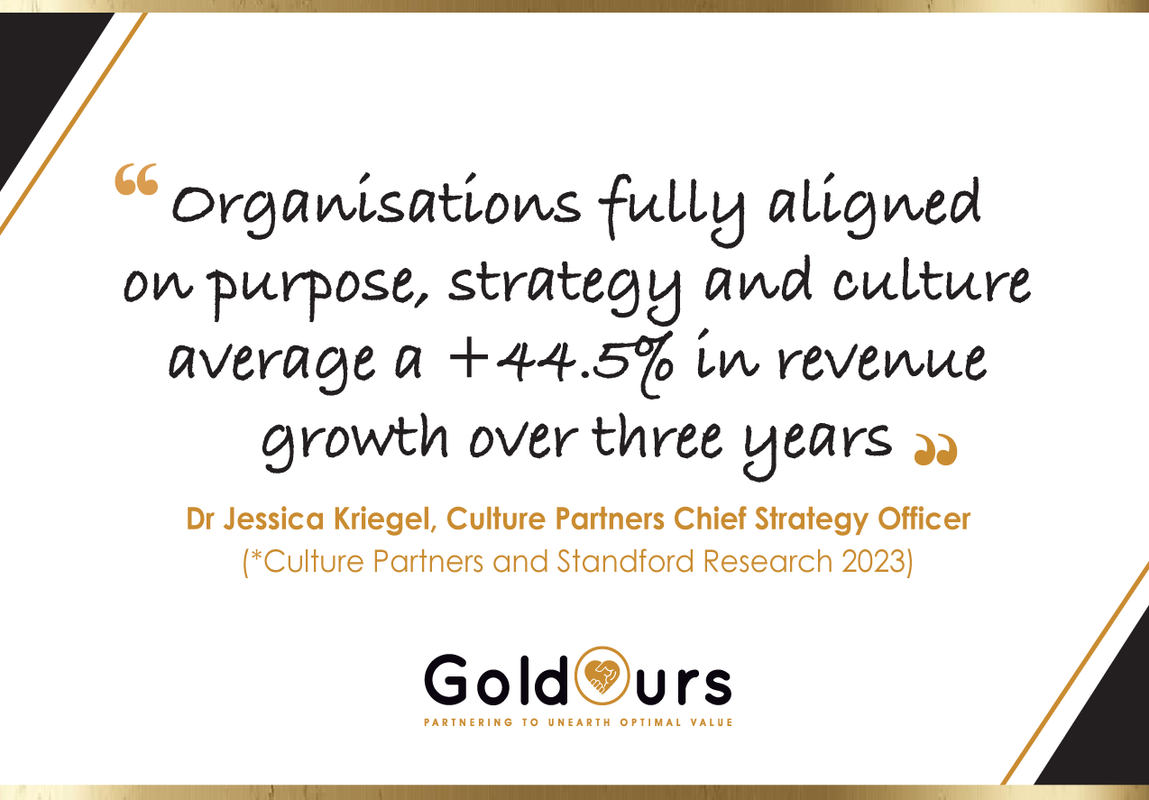
Transforming team culture
While reviewing the material I wanted to include in this Goldours’ blog, I came across the insightful Culture Partners content. Formerly Partners In Leadership, it was founded in 1989 by authors of the NY Times best-selling books, The Oz Principle and Change the Culture, Change the Game.
The current chief strategy officer, Dr Jessica Kriegel, says that “organisations fully aligned on purpose, strategy, and culture average a +44.5% change in revenue growth over three years.”*

That’s impressive.
What’s more, she explains, the more you align your culture with your purpose and strategy, the more you’ll gain business advantage.
So while culture may not be important per se to investments, revenue growth is, and so all efforts to improve an accountability culture are particularly relevant.
And we are also talking about accountability at the leadership level.
“One for all and all for one,” a motto of The Three Musketeers, which means that the group will act as a united front to support and protect each other. The phrase symbolises their strong bond of brotherhood and loyalty. Not too different from what is required in a business.
So how does one create a culture of accountability?

As with most organisational activities, culture change doesn’t happen overnight. It is a process that consists of five steps, as shown below. And at its centre is leadership that must drive the change.
A Harvard article, penned by Esther Han, says that creating a leadership culture of accountability is evidenced by five behaviours:
- Leading by example. Leaders must lead by example and demonstrate the behaviours they want to see in the organisation.
- Providing meaningful feedback. Gallup research shows that regular, meaningful feedback is four times more likely to lead to engagement.
- Combating workplace bias. Particularly important for South Africa, I support the thinking and practice of building a culture of ethics and accountability because it means people must proactively combat bias and stereotypes.
- Giving employees a voice. While this process is not easy or comfortable, it is proactive and involves really listening to others. But it does mean that you should be able to increase employee satisfaction and reduce costly staff turnover.
- Developing an authentic leadership style. Your leadership style will effectively demonstrate your values, principles, and mission.
This blog has touched on the important topic of culture. There is a lot to discuss to help organisations embrace ethical practices across the public and private sectors. It’s a topic that needs much more discussion, particularly among leaders and their teams, to embrace processes that will help guard against this scourge. As in the words of Desmond Tutu, “if you are neutral in situations of injustice (or corruption), you have chosen the side of the oppressor (corruption)”.
(*Culture Partners and Stanford Research 2023)








